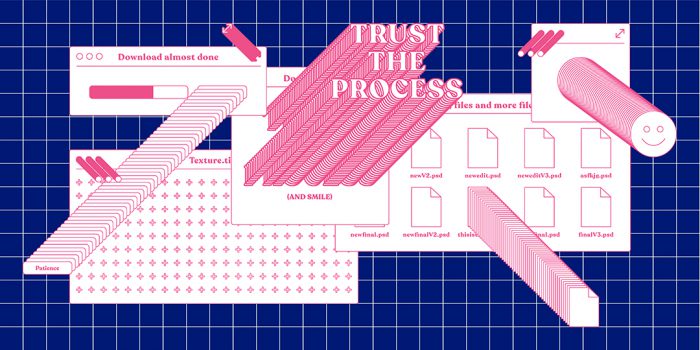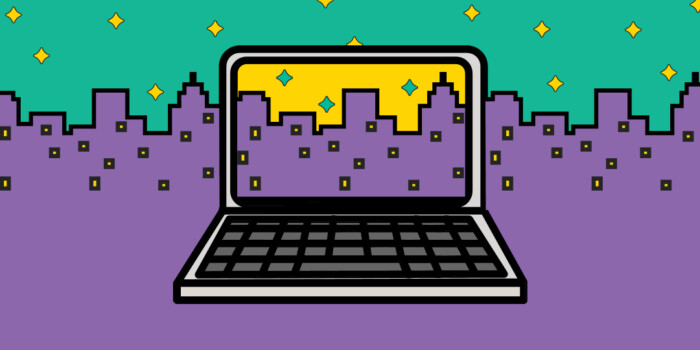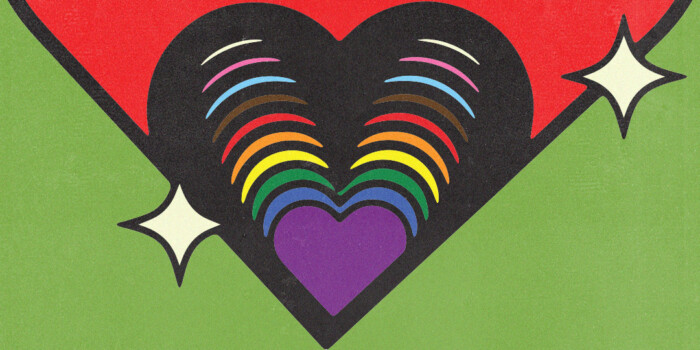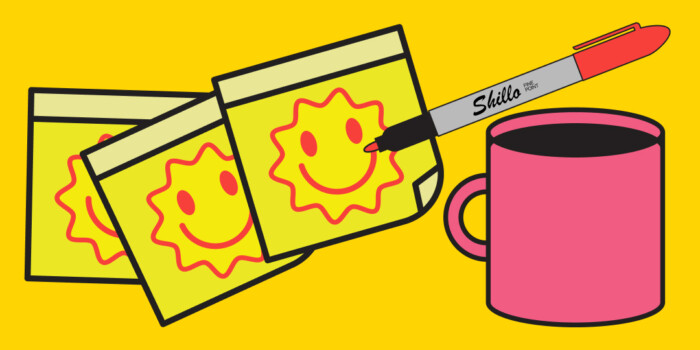A Designer’s Guide to Battling Imposter Syndrome

You’ve always dreamt of being a designer and suddenly you find yourself actually doing it. Answering briefs, building your portfolio, even working in a studio. But yet, something doesn’t feel quite right. You can’t help but feel incredulous—waiting for someone to catch you out and bring you back to reality. This is Imposter Syndrome, an unpleasant notion which often creeps into the minds of designers. It’s the feeling of not being worthy of your achievements and feeling that everyone else must be superior.
We’re all too familiar with Imposter Syndrome at Shillington—with graduate Natalia Baker previously sharing her experiences of feeling inadequate in ‘Facing Your Fears‘. This time round, Sydney part-time teacher Fiona Yap lifts the lid on insecurities to share her advice on battling Imposter Syndrome to students and graduates alike.
During my time as a teacher one common trend I notice with my students is the recurring dips in confidence and self belief. Shillington is an intense experience and for a lot of students, feelings of insecurity can be exasperated by being exposed to completely new processes and procedures.
Suddenly you’re in a new environment doing things you’re not used to, using terminology you didn’t know existed mere months ago and training your brain to work in a radically different way. We get it, it does take a lot of getting used to—sharing your design and speaking about it is daunting but take solace in the fact that you’re in a safe place.
Shillington is not a one-stop ego shop, every student I meet is humble and considerate. Throughout the 3 months or 9 months, we move together as a cohort, supporting one another as we grow and develop.
These feelings of doubt, negativity and self depreciation slowly dissipate as confidence develops.
What if we told you that all of those unpleasant feeling of inadequacy can actually be condensed into one singular definition? Welcome to Imposter Syndrome: It’s the feeling that you’re a fraud—that everything you’ve achieved has been the result of good luck. You have no idea what you’re doing and you feel that you are going to be rumbled at any moment.
The term has been widely adopted by the creative community—presumably as creative work is deeply rooted in the notion of ‘self’. We put a large portion of ourselves on the line as designers—without sounding hyperbolic, our ideas can often feel like extensions of our personality. This openness unfortunately produces a catalyst for the Imposter Syndrome to thrive, but by recognising the triggers we can train ourselves to overcome the negative feelings, allowing us to concentrate on why we wanted to be designers in the first place.
Like most demons, Imposter Syndrome is something lurks in the shadows, without indication of when it will rear its sinister head. It isn’t something limited to design students or even junior designers. It hits all of us at points in our careers, even when you graduate and get that job you may think it’s just down to good luck “how could this have happened—it must be a mistake”. But, like anything, opening up and talking about it is a step closer to overcoming it.
We know ourselves the best. We are aware of all our anxieties and insecurities. We allow ourselves fallbacks and excuses. When we see others succeed, we see them as higher beings—elevated on a pedestal. They appear as if they have that something extra that helped them succeed. What we don’t see is what they’re hiding, their anxieties and insecurities. That “something extra” isn’t magic, it’s confidence. We judge ourselves from the inside and others from the outside. I love the analogy that The Book of Life quoted,
“Kings and philosophers shit and so do ladies”.
Given that this was sourced from the 16th century, the premise is that no matter the achievement, we are all the same.
A lot of designers are self-taught, so it’s common to feel like we haven’t earned our worth. Identifying said ‘worth’ helped me with own my work, and to start being prouder of my achievements. I now know people approach me because I’m an accomplished designer. I tell myself that I’m the expert, enough times until I develop the confidence to firmly believe it—in a sense I became my own cheer squad. Same goes for all of you starting your design journeys. You know your stuff—so own it.
So, how can you overcome Imposter Syndrome? Don’t freeze up. Don’t step back. Accept that growth comes from challenges. Remind yourself that no one knows what they’re doing. Keep diving in.
There’s an abundance of resources online from Ted Talks to op-eds with established creatives coming clean about their experiences of Imposter Syndrome and how they’ve dealt with it—explore the resources below and share them with your peers.
Here are some resources to check out:
- Paula Scher on challenging yourself
- Mike Cannon-Brookes on Imposter Syndrome
- Overcoming Imposter Syndrome
- The Book of Life
- Creative angst: a guide to getting over creative block, imposter syndrome and fear of the blank page.
Whether you’re new to the design scene or on your way up the career ladder we have lots of resource pieces on our blog. Why not take a look at the 50 Essential Books Every Graphic Designer Should Read or kick back with an inspirational video of Adrian Shaughnessy’s talk during his visit to Shillington London.
Want to win some amazing prizes and stay in the loop with all things Shillington? Sign up to our newsletter to automatically go in the draw.







